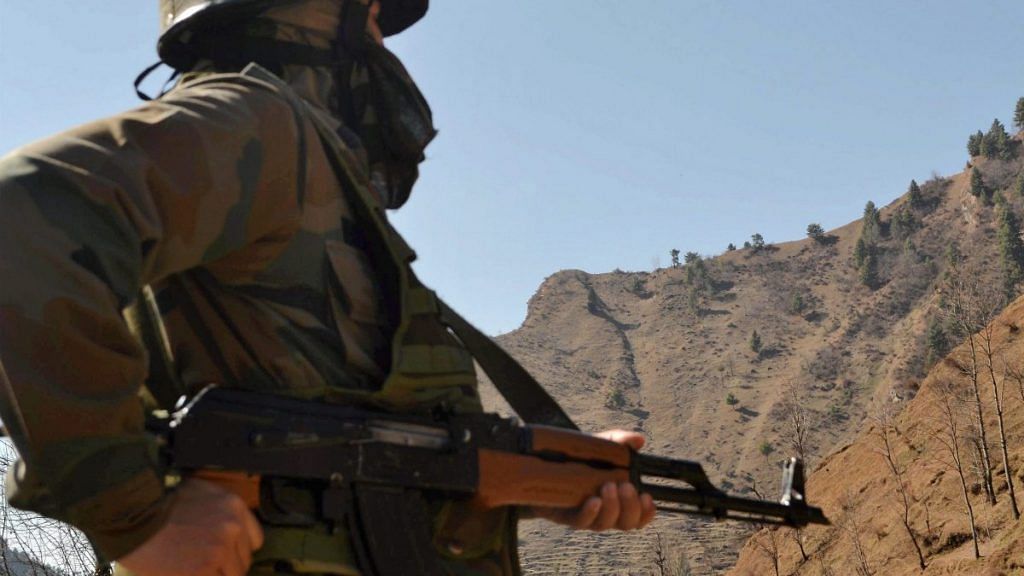With two-front tensions likely, pressure will be on the army’s most abundant resource, its soldiers.
It lasted for a good 14 years but the long-standing agreement between India and Pakistan to curb exchange of fire along the Line of Control (LoC) – one of the most militarised borders in the world — is now over.
This substantial increase of violence on the border, continued Pakistan-sponsored terror strikes deep into India to target military camps, disturbing statistics that show local recruitment of militants is at a seven-year high and no evidence that terror funding across the border has reduced indicate that a very hot summer is coming up this year in Jammu & Kashmir.
If things along the LoC are a prime concern, the summer will also bring to focus the other border where an adversary plays the non-violent but more provocative occupation game. The Line of Actual Control (LAC) has seen the most tense moment in more than a decade and coming months will spell out the game China decides to play after last year’s embarrassment at Doklam.
It could be argued that the possibility of simultaneous tension on both fronts is now the highest since it has been in over a decade.
The occupation
Besides Doklam, where India is keeping a hawk’s eye for any indication of resumption of road construction, several potential flash points along the LAC will keep troops on the guard.
Intelligence inputs and satellite imagery from across the border do not suggest a complete withdrawal of troops at Doklam itself, opening up the possibility that the Chinese may again press their claims on the strategic plateau.
Whether Bhutan will hold up to continued pressure is something that needs to be watched out for. The increasing deployment of air assets in Tibet will also need to be watched, with the Indian game changer in the air – the Rafale fighter jet – still two years away from arrival.
The ceasefire
It hasn’t been called off officially but for all practical purposes, Indian and Pakistani troops have abandoned any pretence that they continue to abide by an agreement to stop fire assaults on the border. An agreement that was reached by the Atal Bihari Vajpayee-led government in 2003 – a coincidental 14 years after the insurgency hit Kashmir.
In the first six weeks of this year, Pakistan has accused India of 335 ceasefire violations. The Indian contention is that all violations were in response to Pakistani firing, attempts to push terrorists across or targeting of civilians living near the border.
Indian commanders along the LoC are prepared for full-scale fire assaults and, if need be, to pick out and target individual Pakistani troops in revenge attacks. The firing until now has been restricted to heavy mortars, small arms and anti-tank guided missiles (ATGMs) but things are a whisker away from scaling up to an all-out artillery war. The opening up of artillery along the border will be a return to the post-Kargil era where large-scale casualties occurred on both sides due to continued fire assaults.
The human factor
Adding to this are the continuing deep strikes by Pakistan-backed terrorists on Indian security camps – the Pakistani version of surgical strikes. Startling numbers shared in the state assembly that show 126 locals have been recruited as militants last year (the highest since 2010) would put security forces in the hinterland to test as well.
Given the limited firepower that India has to take on the border – an overwhelming conventional edge is still far from reality with the procurement pipeline still clogged, making the average Pakistani soldier much better equipped – the responsibility to take on the burden of the coming hot summer will fall back to the soldier on the ground.
The pressure this summer will be on the most abundant resource that the Indian military has – its army of soldiers. A resource that is vast indeed but cannot be treated as expendable.
